
'BUSINESS AS ...UNUSUAL...!'
HR TRENDS 2022
HR GETS ΙΜΜΕRSIVE!
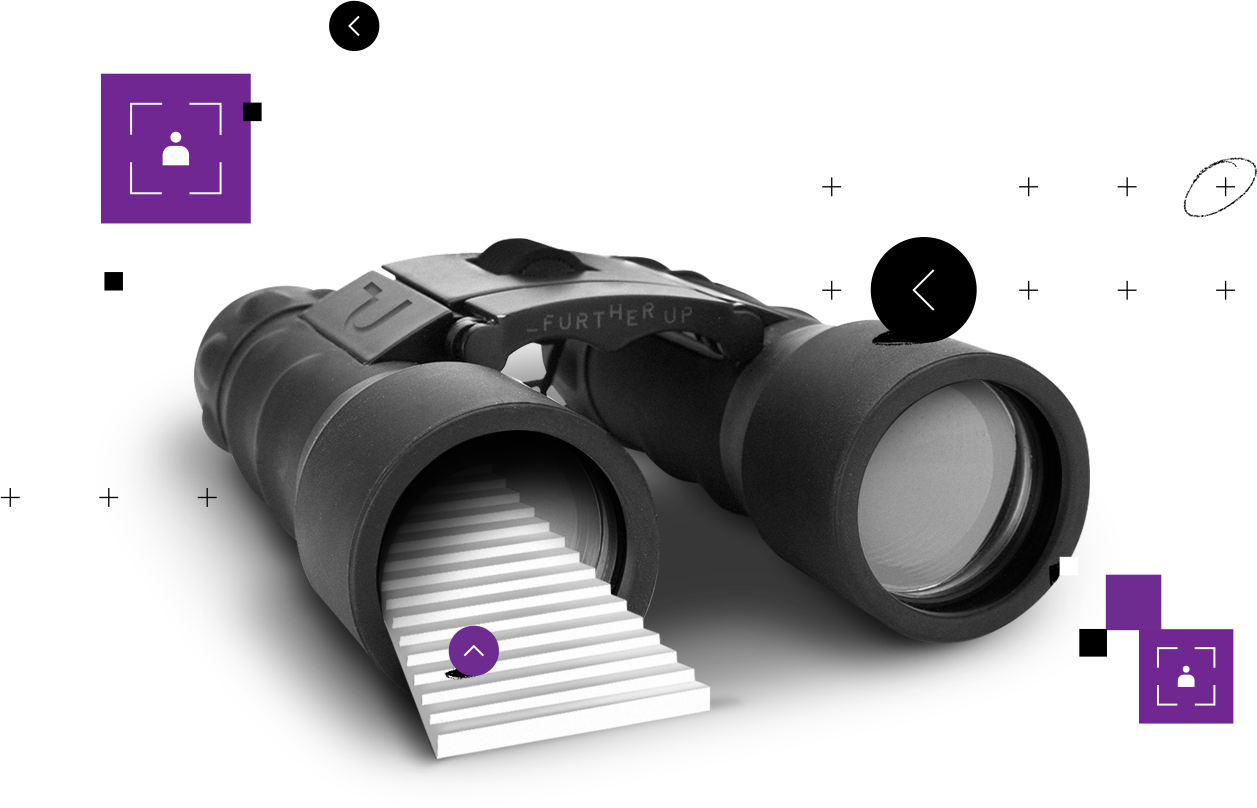

' Business as
…unusual ...'
It took us a while – as editing team of ‘FurtherUpdate’ – to decide what to put on the cover of our first 2022 newsletter that dealis with HR trends and the future of work.
We have finally chosen as a symbol the binoculars to show that future – at least the near future - is something that can be visible and depends a lot from our present standpoint, direction and psychology.
Trends specialists, research centers and business consulting teams manage to gather every year useful statistics about HR trends and the future of work ( We have made a selection that you can find as recommended readings in the artlcle).
Uncertainty, Surprise, Risk would not stop human progress that seems able to use – at least in business - a new moto: ‘business as unusual’…
Technology, once again, has provided solutions (vaccines, internet, teleworking platforms, e-commerces etc) to help the situation.
It also seems that Remote and Hybrid have pulled the work environment into a new space which the Management Team with the help of HR would be called to normalize, taking into account all the challenges associated with it:
Talent scarcity and high Turn Over in the case of the knowledge worker, Reskilling or Upskilling for the rest workforce, keeping a human Purpose and safeguard human values, equity, DEI are some, together with digitalization - meaning not only digitizing documents or digitaliging processes but reskilling the entire organization in digital skills.
For many people (mainly knowledge workers) this period has opened them a window of opportunity and lots of them have decided to do a change in their career and accept a new job offer. But, how does it feel to work with your current employer and colleagues until the three months notice period expire is what John Ioannou describes in its article giving us useful tips.
What happens to those who stay and have to move internally in order to fill gaps would be the next question… We suppose that for those, Training is part of the solution. Learning is a critical factor for HR and the business to maintain and further develop the Talent. Now , thanks to the training platforms, training has become more flexible and more efficient and can be easily adapted to the way that everyone has learned to learn - as Mr Michalis Tzortzakis, CEO of Flexlearn is emphasising it his article.
Don’t forget to have an eye on the article of Mativision by Joanna Tzima about how VR and AR could be of use to HR and the future of learning! Fascinating and not as far as we would think!
We would also like to thank you in advance for responding to our HR Pulse (Whats’ on the HR Radar in 2022) and, finally, wishing you to enjoy and celebrate together with Nature now in Spring the tremendous energy of life by having a long walk around and just relax!
EDITING TEAM FOR THIS ISSUE:
- Pavlos Avramopoulos
- Anastasia Makarigaki
- Raoul Briche
- Dimitris Tzimas
ARTWORK FOR THIS ISSUE:
DESIGN + WEB:
EXTERNAL CONTRIBUTORS:
- John Ioannou
- Joanna Tzima
- Michalis Tzortzakis
- Katerina Alexopoulou
LEGAL RESPONSIBLE:
- FurtherUp
- Charilaou Trikoupi 60, Kifissia
- info@furtherup-hr.com
- www.furtherup-hr.com
HR trends 2022: A CONSCIOUS RECONNECTION?

What are the forces that will drive HR and the world of work in 2022?
We can't exactly know but we can imagine and can have an idea based on information that we have, our experience on the field, discussions, and good reads such as papers rom professional analysts or research centers.
How close this idea is to reality depends in big part on us: It has to do with the space that we need or dream to cover and the speed that we could develop in order to reach our end with the ressources that we can find.
The previous two years have been unexpectedly difficult for some people: all those who have lost members of their family, friends or their job. They have been bad also for companies that did not manage to survive and had to make people redundant. For others - companies or individuals - 2020 2021 has been a stimulating period giving them the chance to get out of their comfort zone quicker than expected, exploring new paths and finding solutions to the challenges. Some even can talk about two extraordinary years, with business going unusually well or starting up a new business. Such disappointments or excitements are well hiden carts that Future opens only when time comes. We will try to make a good use of our imagination and experience to get an idea about what 2022 could bring along for HR. We recommend some good reads that have been sourcing parts of our story with facts & trends in relation to HR and the Future of work:
- 1*) https://www.kornferry.com/insights/featured-topics/future-of-work/2022-future-of-work-trends
- 2*) https://www.gartner.com/en/human-resources/trends/top-priorities-for-hr-leaders
- 3*) https://hbr.org/2022/01/11-trends-that-will-shape-work-in-2022-and-beyond
- 4*) https://www.forbes.com/sites/jeannemeister/2022/01/05/top-ten-hr-trends-for-the-2022-workplace/?sh=7db930793006
- 5*) https://www.pwc.com/ee/et/publications/pub/future-of-work-report.pdf
- 6*) 2021 Deloitte Insights - Deloitte Global Human Capital Trends Special Report The worker-employer relationship disrupted
Looking into the future certainly needs great concentration and is important … but it has to be done quite fast... allowing some time to the present to do its job!

The experience of the pandemic, technology, and the new skills in demand create new zones of comfort or discomfort for both businesses and individuals. Knowledge workers are in position to offer their services anywhere in the World and their turnover rate is expected to raise.
The focus to the individual from an HR point of view and the continual investement in self are important for the post Covid19 period in order to stay in the 'bigTalent game' - the work.
INDIVIDUAL: AT THE CENTER OF ATTENTION
‘Know thyself´ at an organizational level is something that a wise HR department would seriously take into account to better understand what motivates the organisation and keep a high level of employee satisfaction.
- ‘Gnothi Seavton’ has been found at the Delphi Oracle. It is one of the important means that people have to recognise the impact of what the future can bring to them could be...,
- A Korn Ferry survey revealed that 75% of candidates say it’s unlikely they would accept a job if they were treated poorly during the interview process. Source: Korn Ferry (*1)
During the Covid19 disruption, workers experienced new ways of being@work but also about the way employers behave in Crisis periods and treat people. Lots of people have had to leave their employer, others have been tempted to look for a new job or have found one. Others have rediscovered their families and the pleasure of doing things for them with them or doing more about themselves.
- McKinsey research finds working parents are more likely to have left their jobs during the past 2 years than their non-parent counterparts. Reasons include exhaustion from the pressures of working from home and juggling childcare responsibilities, struggles with returning to the office but not finding consistent childcare, and reevaluating their overall work-life balance.
Source: https://www.mckinsey.com/business-functions/people-and-organizational-performance/our-insights/married-to-the-job-no-more-craving-flexibility-parents-are-quitting-to-get-it
The level of expectations has been raising during this period – especially from the workers' side who are convinced about the value they could offer through their work to a good employer (even remotely).
- 86% of executives asked said they believe workers will gain greater independence and influence relative to their employers in the future. Source: Deloitte Insights (*6)
- Microsoft 'The next great disruption is Hybrid work Jul2021 40% of the global workforce consider leaving their employers this year Source: Deloiitte (*5)
- Out of 700 professionals surveyed almost a third (31%) said they were thinking of leaving their job even though they didn’t have another one lined up.
Source: Korn Ferry (*1)
Knowledge workers know better now how and by whom their knowledge is valued and some prepare for their next career step elsewhere.
Investment in skills counts more.
- Top ten powerskills for 2022
- Resilience & Adaptability
- Technology skills / digital fluency
- Communication across repote or distributed teams
- Emotional Intelligence
- Cross-functional collaboration
- Leading through change
- Change Management
- Dealing with stress / being more mindful
- Time Management
- Creativity
Source Linkedin 2021 Workplace Learning Report

The Human Element expressed by the Purpose Statement and the Corporate Values and the Management ability to maintain it is now more visible than ever before.
Wellbeing matters are important for the companies therefore Health KPIs are progressivelly included in the objectives and Strategy of the Companies.
THE HUMAN ENTERPRISE
Enterprises have shown how fast they can be in responding to a crisis and take measures beyond ‘business as usual’ such as health management procedures, teleworking, business continuity, R&D or help the state.
Employee Wellbeing programs are taken seriously by employers that are convinced that they can increase productivity and reduce the health risks of their employees.
- While raising wages is one way to attract and retain employees, research conducted by Paychex and Future Workplace among 603 full-time workers found 62% of employees identified well-being benefits as key a key factor in deciding whether to apply for a new job. This was especially true for Gen Z, where 67% strongly agreed or agreed that well-being benefits will be a priority for them in evaluating new job offers.
Source: Forbes (*4)
Those programs do not focus only on Mental or Physical wellbeing, but encompas healthy Nutrition, financial or Social Wellbeing as well as the 'healthy experience' at work. It is imposible to isolate Wellbeing and Health at work or during the free time - Health is holistic and any problems are transfered from one field to another.
Health & Wellbeing are increasingly perceived as an 'asset' that has to be preserved by both workers and employers.
- The Global Wellness Institute believes workplace mental health benefits will grow 9.8% annually over the next five years. Source: Forbes (*4)
- "Sitting is the smoking of today"
The shift to working remotely has impacted employees in various ways. 35% of the sample increasing physical activity and losing weight 40% became increasingly sedentary and gained weight, likely due to the lost physical movement associated with commuting and walking around from meeting to meeting in the workplace. Source: HBR (*3) and Gartner
Wellbeing programs involve the HR and facility team and cover all sorts of activities like inhouse sports training, relaxation programs, health specialists consultations, vaccination campaigns, weight loss campaigns, healthy nutrition, Employee assistance (psychological support, financial support), Quite Areas, Subsidised Gym, Insurance Programs, Tax expert advise paid by the company etc.
- Gartner research shows that just 10% of HR leaders tracked well-being ROI with formal, quantitative metrics in 2020. Source: Gartner in https://www.gartner.com/en/articles/5-key-trends-that-make-well-being-programs-effective
- Companies driven by purpose post compound annual growth rates of 9.85% compared to 2.4% for the S&P 500 overall) (Reference Korn Ferry (*1) Source McKinsey,2019)
Purpose and Values such as Fairness & Equity, Inclusion & diversity attract Talent, Consumers, Suppliers or investors.
- According to our analysis of S&P 500 earnings calls, the frequency with which CEOs talk about issues of equity, fairness and inclusion on these calls has increased by 658% since 2018. Source: HBR (*3)

Hybrid work has originated a business transformation in the global economy. Sectors like Supply Chain have difficulties to find talent for their operations. Talent supply, upskilling and rescilling are the main challenges for HR, Businesses and Policy Makers.
TALENT SUPPLY IS A KEY CHALLENGE
Hybrid came to stay. Some employers doubt it, believing that office work is and will always be more productive that hybrid or working from Home full time. Employees are determined not to let this ‘benefit’ fall down.
- 49% of professionals say they would turn down a job offer if the company mandated that they go into the office full-time Source: Korn Ferry (*1)
- A vast majority of HR leaders (95%) expect that at least some of their employees will work remotely after the pandemic. This shift to hybrid work will be a massive driver of transformation and one HR leaders must be prepared to support. Source: Gartner - https://www.gartner.com/en/human-resources/trends/top-priorities-for-hr-leaders
The Employers are facing bigger dilemmas in fields likeSupply Chain. Is is very hard to find workers for low paid jobs when people can earn much more as courier or efood employees for the same hours of work - tips on top.
- More than 90% of employers are planning to adopt a hybrid working model for their knowledge workers in 2022. Source: HBR (*3) and https://www.gartner.com/smarterwithgartner/returning-employees-to-an-office-consider-the-talent-risks
- According to a recent Korn Ferry survey, nearly a third (32%) of professionals said they don’t think they’ll ever go back into the office full time, and 74% say they have more energy and focus working from home instead of the office. Source: Korn Ferry (*1)
HR has to consider a talent retention portfolio strategy to find the right method when “Buy” is not working: “Build”, “Borrow”, “Bind”, “Bounce”, “Bot” (as it was mentioned by Korn Ferrys' 2022 Future of Work trends *1).
Machines are ready to take the dangerous, hard, stressful, fastidious, unproductive or repetetive tasks off the shoulders of the workers, foreman or supervisons provided that the economy can pay the price. It is a challenge for Government regulators, Industry leaders, Economists and HR: ‘How to fill the Gaps and at the same time reskill and upskill the actual job holders’.
- Manpower Group June 2021: The demand for skilled workers is grown, 7/10 employers saying that they are struggling to find workers with the right mix of technical skills and human capabilities Source: Manpower Group
- Focus groups when asked about what's the most influencial with regards to the future of the worker-employer relationship said TALENT SUPPLY and GOVERNMENT IMPACT Source Deloitte (*6)
- Mckinzey estimates that 100 million global low-wage workers will need to find a different occupation by 2030 Source: Mckinzey the future of work after Covid19 - Feb18 2021

Public and consumers trust companies that show respect for the environment. They put pressure on polluters through active and effective NGOs.
More and more Companies are issuing a yearly Sustainable Growth report. The preservation of the environment is monitored and regulated.
GOOD –> GREAT –> GREEN!
Today, every household has an idea or an opinion about sustainability, geopolitics and a lot better understanding than in the past about energy saving, raw material scarcity, CO2 imprint, ocean pollution, geothermy, glacial melt, bio products, water scarcity etc.
- 6 out of 10 consumers asked said that they are willing to change habits to reduce the impact on the environment. Source: Korn Ferry (*1)
- Research has swown that consumers are 7 times more likely to buy from a brand they trust
Source: Korn Ferry (*1)
The public’s attention for those matters could instantly erase from the map all the firms that have not shown enough respect for the environment or the society.
- Regulators are also active in this https://ec.europa.eu/info/strategy/priorities-2019-2024/european-green-deal_en
The list of companies that use KPI’s to measure sustainability and take appropriate measures reporting them every year in a Sustainability Report is growing.
- Five ways ESG creates value, (Reference Korn Ferry (*1) Source McKinsey,2019)
-Securing funds (Global sustainable investment now tops $30 trillion)
-Attracting and retaining talent (71% of professionals say they would consider taking a pay cut to work at a company that aligns more with their values)
- Building credibility (see above)
-Broadening your customer base (see above)
-Reducing costs
In many organizations, sustainability reporting is under the responsibility of cental HR and requires data collection processes, accuracy and a good sence of internal communication and marketing.

Internet and Data technology can enhance collaboration, creativity, sound decision making driving us steadily towards a very regulated 'space' requiring special attention, good processes, and a 'powerskilled' human organization… Internet is maturing too.
DATA FOR HUMANS
Data technology can enhance collaboration, creativity, sound decision making, and drive everything but at the same time becomes highly regulated (GDPR, metadata treatment etc).
An organization spends consiberable resources (time, systems) to stay compliant in this ever growing sophisticated digital environment .
- EU DATA ACT in discussion https://ec.europa.eu/commission/presscorner/detail/en/ip_22_1113
- https://ec.europa.eu/info/strategy/priorities-2019-2024/europe-fit-digital-age_en
The new generations of Consumers have new expectations requiring things ‘here and now’. Sales through platforms can see the light only if the product or service takes excellent comments.
- About the way of thinking of millenials see https://www.pewresearch.org/social-trends/2019/02/14/millennial-life-how-young-adulthood-today-compares-with-prior-generations-2/
Making things simple for the stakeholders is important and can be achieved only with the use of technology and collaboration with firms that provide flexible systems.
- Αbout the digital future in EU https://ec.europa.eu/info/strategy/priorities-2019-2024/europe-fit-digital-age/shaping-europe-digital-future_en
Digitalization 'Here and Now': Digitisation of Documents, Digitalization of business processes and transactions, Data Warehousing , enhanced IT skills and communication skills for the Managers and Employees… which are on HR Radar.
- HBR research has shown that 65% of the tasks tat a manager currently does has the potential to be automated by 2025.
Source: HBR(*3)
Virtual Reality (VR) or Augmented Reality (AR) are now accessible from a cost point of view and can add quality and efficiency to the business and HR processes.
- Facebook invests in metaverse
HR GETS
IMMERSIVE!
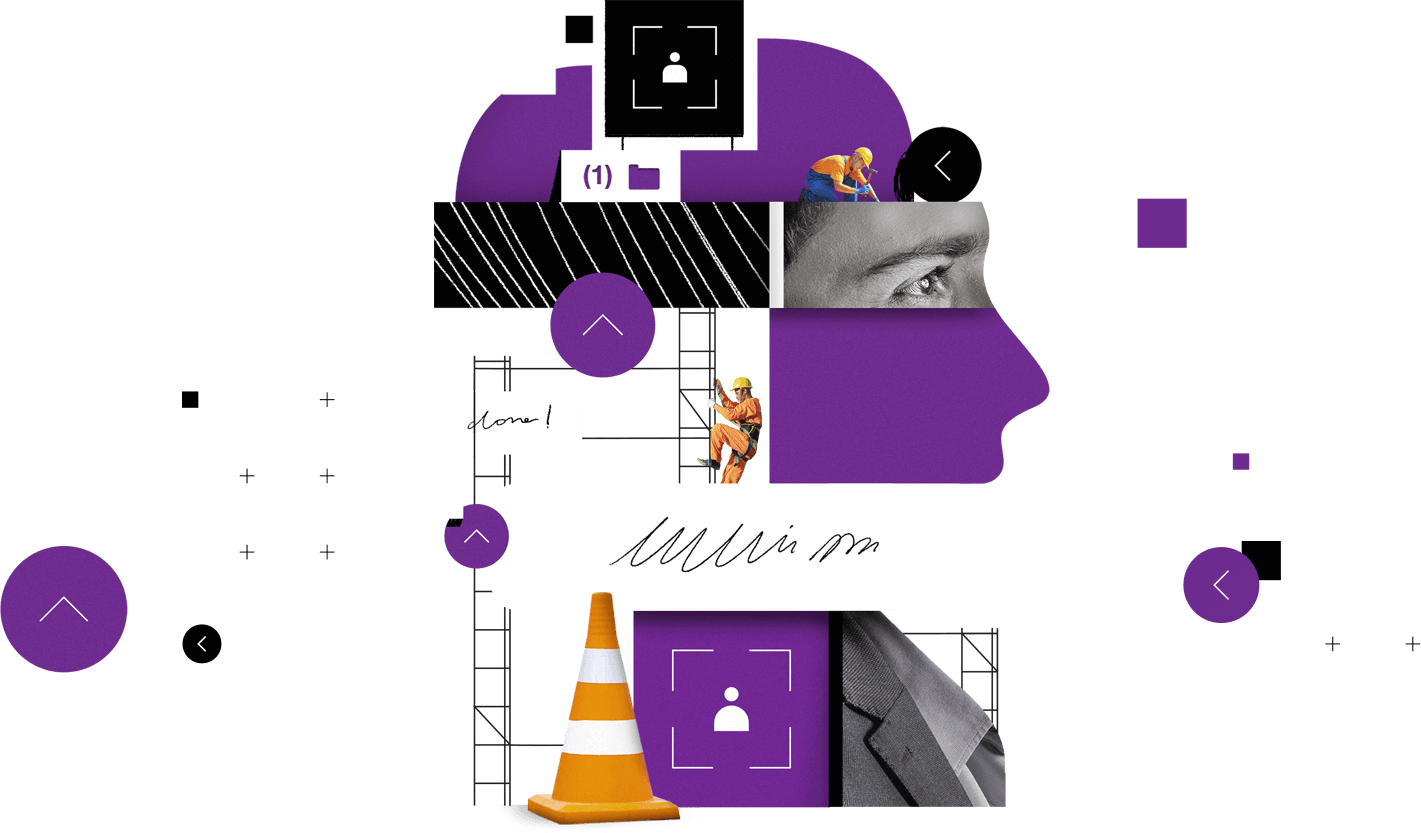

Joanna Tzima: It is a fact that the technological developments of the last decades are constantly adding new terms and new digital tools that have an influence on our professional and personal life.
The term ‘Immersiveness’ (or otherwise ‘Immersion’) means that we are “transported” into a digital environment, a digital reality, allowing us to interact within it, as we would in real life. This digital reality allows us to create simulations of scenarios (real-life or not), get informed, trained, be evaluated, follow, and take part in collaborative environments. To achieve immersion the technologies of Virtual Reality (VR) and Augmented Reality (AR) are used.
Joanna Tzima: Immersive HR can offer the ability to remotely “experience” a shared reality which means that any new information, any new abilities can be assimilated in the least amount of time. Immersive HR negates the need for physical presence and the organizing of training groups. Immersive HR can allow users to experience a training session either in a synchronous collaborative environment with other trainees or at their own pace, in their own time. To be more specific, think of the next examples: An employee at an assembly line can be trained and start using new machinery without any need for access to any actual machinery. An employee can “walk” around any existing or to be built premises of the company, while tapping on info points without actually visiting the physical location of the company. The employee can be trained in real-life scenarios on how to manage customers by living, experiencing a simulation of the customer scenarios. Τhe employee can be trained on what are the appropriate actions to take in each situation that arises in regards to health & safety. And many more.
Joanna Tzima: Not at all. The technology of Virtual & Augmented Reality is already mature.
VR Applications with VR Devices are utilized in the field of medicine, flight simulations, automotive and military training, since the 1970s and respectively for AR, since the 1990s. In addition, the breadth of devices such as VR headsets, AR glasses, smartphones, tablets on the market is now more extensive than ever covering a broad range of prices. Apart from the obvious aspects of the time gained, productivity boosts inside a company, these solutions are now a must have. This is further highlighted by the new conditions imposed by the pandemic, with the need to remain fully operational in all areas such as sales, sampling, training, support no matter where we, our customers, partners, and colleagues are located. It is not a coincidence that the business world, on an international scale, uses and will do so even more intensely, in the days to come, the term Metaverse, which is nothing more than the remote synergy of partners through VR and AR environments.
Joanna Tzima: Τhe adoption of Immersive HR does not require any change in the way an HR department works and operates at present. HR depts now have two new tools (VR & AR) at its disposal to transform information into an “experience”, which are always accessible, regardless of place and time and can be used to achieve goals faster, more efficiently and with less involved cost.
In every area of Human Resource there is potential and opportunity to use VR & AR such as:
- Adding an experiential and interactive element in the learning of procedures. VR&AR offers experiential onboarding, remote experiential training with the possibility of interactive tests and assessments, simulations of health & safety situations, remote support with hand-on experience and two-way communication.
- the ability to experience all the scenarios described above, regardless of where the user is based.
Joanna Tzima: Immersiveness is not something that is ready to use off-the-shelf but has to be implemented according to the needs, goals, infrastructure, internal structure, nature of the products or services of each company, organization, or group.
VR & AR experiences are designed and developed based on the specific needs and goals of the Human Resources department. These experiences can be developed in stages and be further expanded upon either in complexity or content.
In the past few years we see companies and multinational corporations shaping their own Immersive HR identities, with the aim of boosting their productivity, reducing their fixed costs, and ensuring their smooth operation regardless of any challenges that may arise.
To achieve HR Immersiveness, requires proper guidance and support by an Immersive Content Partner who - with his experience and knowledge, will offer the opportunity for any company to "adopt" Immersiveness gradually, effectively and always successfully. Mativision is such a partner, who takes the lead in designing and implementing the optimum Immersive HR experiences for each business.
Mativision Ltd. (www.mativision.com) is a UK based company active in the international market in the design and development of Immersive experiences since 2009. We have and maintain one of strongest portfolio of Immersive Media customers, with companies such as Unilever (UK), Samsung (UK), Chrysler (US), FOX (US), Vodafone (UK), Viacom (US), Warner (US & UK), Google (UK), Facebook (US), COACH (US), FIAT (IT), NHS (UK), MUSE (band, UK), SLASH (artist, US), Action Aid (GR), Novartis (GR). We have been awarded multiple international awards, with most recent the "Business Elite Award 2022” for “London’s Best VR and Immersive Content Technology Specialists “. We also play a primary role in the area of Immersive Content Platforms, through our participation in major UK 5G Trials for the Industry, entertainment, medical education and tourism.
We strongly believe that 'experience is everything' and thanks to our collaboration with FurtherUp – an innovation driven HR consulting company - we can offer to every company a first-hand experience of how immersive applications will transform the quality of the HR services.

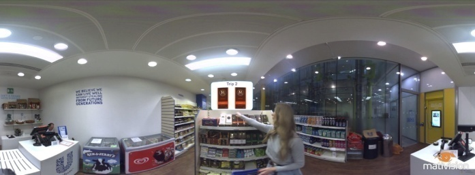
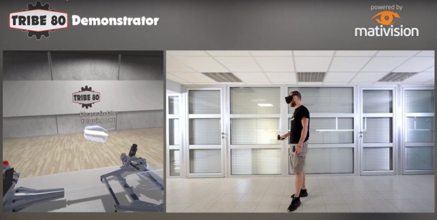
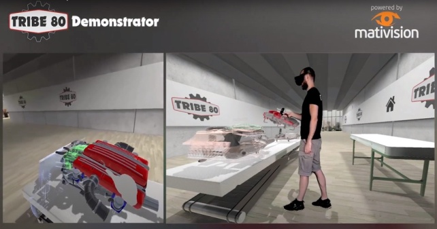
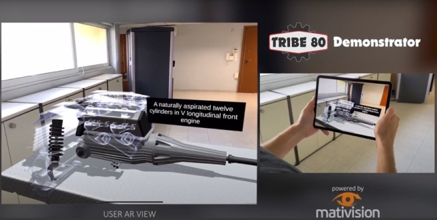
Glossary of basic terms
Virtual reality (VR) places the experiencer in another location entirely. Whether that location has been generated by a computer or captured by video, it entirely occludes the experiencer’s natural surroundings.
Augmented reality (AR) is the overlaying of digitally-created content on top of the real world. Augmented reality allows the user to interact with both the real world and digital elements or augmentations.
Metaverse — from “meta” meaning “beyond” and the back-formation “verse” derived from “universe.” “Metaverse” means the sum total of spatialized Internet constructs including augmented and virtual realities, or “the sum of all virtual worlds.”
Immersive Learning is an experiential training methodology that uses Virtual Reality (VR) and Augmented Reality (AR) to simulate real-world scenarios and train employees in a safe and engaging immersive training environment.
Immersive experience pulls a viewer into another real or imagined world, enabling them to manipulate and interact with their environment. Immersive experiences use a blend of visuals, sound and technology to deliver unforgettable and engaging worlds.
Immersive — an experience that physically (and usually narratively) puts the audience on the same level in which the primary action of the experience occurs.
Digital twin is a digital representation of a real-world entity or system.
FlexLearn Business Solutions
Michalis Tzortzakis: Digital forms of communication and training existed before the outbreak of Covid 19, but they were not used systemically, either because companies did not offer access to all their staff, or users were not familiar with the use of digital platforms for tele-working or distance learning, and as a result found them difficult to use.
Today, these two problems have been resolved almost entirely, and at the same time tele-working and distance communication applications have developed in a very short timespan, in order to adapt to market demands, and to become faster, safer and more user-friendly.
In the field of professional training, there are namely three types of methodology used.
One form of training is synchronous training – a method that follows the model of traditional teaching, the only difference being that the instructor and the trainee are not required to be in the same physical environment, but are able to meet in a digital room, allowing for the parties to be in different geographical locations.
Synchronous training demands that both the instructor and trainee be present, not in a specific place, but at a specific time. The only requirement is that the parties have access to a device, such as a PC, as well as an internet connection. Instructors and trainees have the opportunity to exchange views in addition to training material.
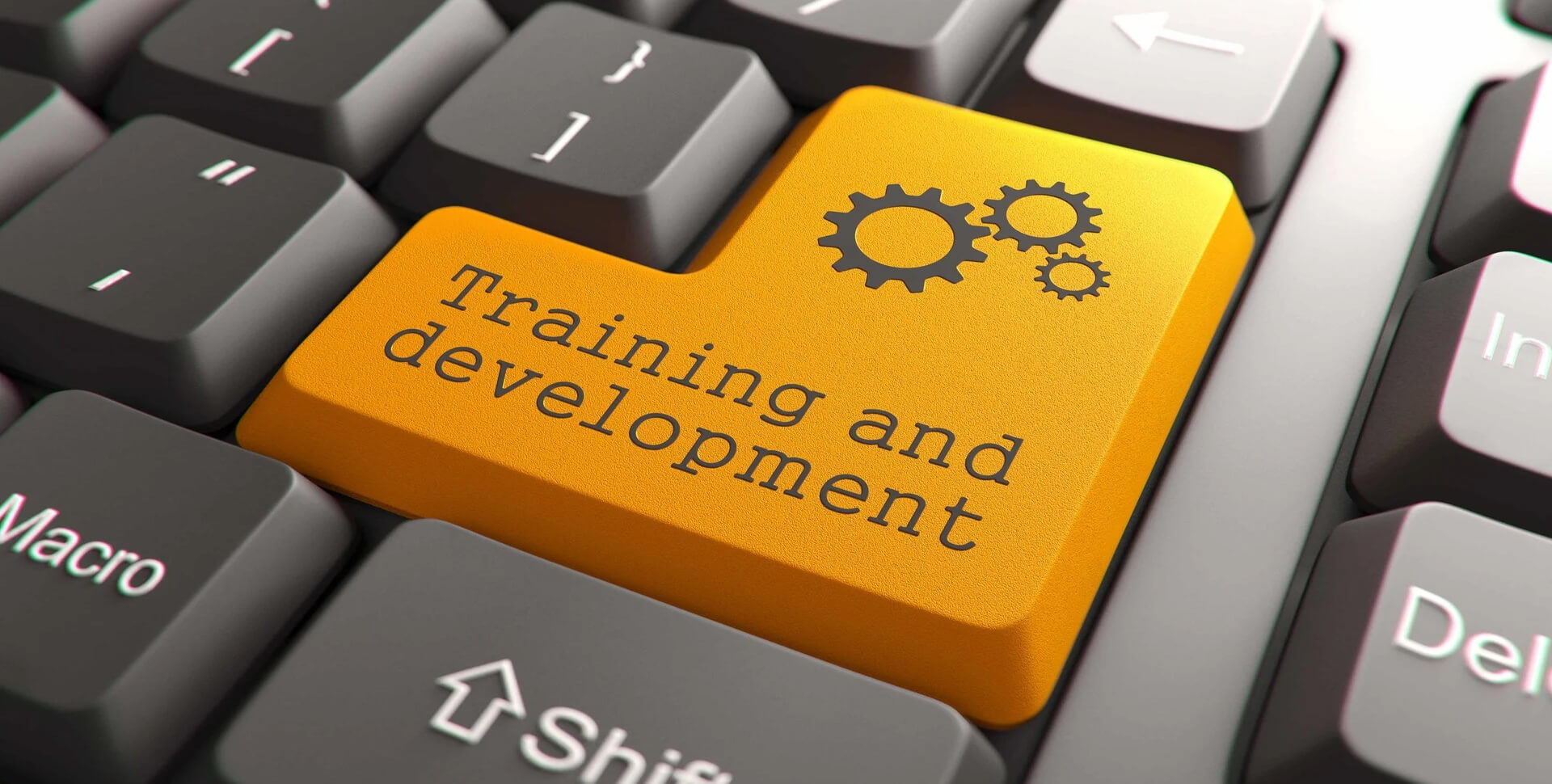
The second type of learning is asynchronous, which is a specialized, more personalized form of training and is aimed at trainees who are unable to take part in a group program which has a specific schedule, either due to geographical constraints, time limitations, or their personal preferences.
Oftentimes, adult learners are able to work to the best of their ability when they are self-motivated, and are not in constant need of guidance from an instructor in order to complete their tasks.
Asynchronous learning allows the individual to create their own training schedule, wherever and whenever they are able to, and manage their learning material, implementing their training with flexibility and freedom of movement.
The third method is the so-called blended learning, which is the most contemporary method of education, combining both traditional and digital learning.
Blended learning combines the use of technology with traditional teaching, while the content is configured so that the training can meet each individual's learning methods and needs.
Michalis Tzortzakis: The business environment is constantly changing and developing, technology is rapidly evolving, and companies are seeking for staff focusing more on their skills rather than their experience in a specific role or domain.
Research shows that companies which invest in lifelong learning attract and maintain their workforce for longer.
Reskilling and upskilling is the result of effective management of lifelong training and is without a doubt a vital prerequisite for the smooth operation of a company.
Thus, it can be seen that the role of the Head of Learning is formed, and acquires a strategic importance for the future of every company.
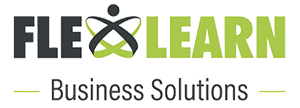
During the last few years, e-learning platforms have been supporting HR in their role, offering new possibilities in learning management while ensuring high quality throughout.
We are proud to have contributed in this direction by developing Flexlearn LMS, our training platform that creates the digital environment needed for all forms of training – traditional classroom training, blended or digital training – synchronous or asynchronous.
Flexlearn LMS offers the opportunity to organize the training content, course management and trainee evaluations, while offering a range of communication and collaboration tools.
At the same time, our platform is easy to personalize, while being safe for the learner and user-friendly. It does not require investment in specialized equipment, infrastructure, and human resources, and it offers a high degree of control at the management level.
We are very pleased as a team to see organizations of a small and larger scale trusting us and using FlexlearnLMS. Furthermore, we feel a duty to continually improve it, following the international trends and technology features as well as the growing needs of the organizations and their people.


Navigating Career Transitions
Is it good to always be authentic? The simple answer is Yes! From my experience though in business as well as in my recent capacity as an executive coach, I struggled to convince myself that it is effective to always be authentic. This struggle has raised several questions for me:
- How authentic should I be as a leader or as a coach for that matter?
- How much of my true self, my feelings, my beliefs and values do I share and when?
- How do I balance how authentic should I be in each and every situation?
I would presume that many of us are faced with this authenticity dilemma. In the very early stages of our lives, parents, educators, and mentors advise us to be honest, be who we are, be true to ourselves... be authentic. Many times however we find ourselves having to adapt and flex our style to be effective and successful. This to me implies that we need to adjust / modify our actions and in many cases our mindset to fit into the ‘system’.
Authenticity is very relevant to how we manage our careers, especially as we move up the career ladder. As different roles have different demands, challenges, expectations, and pressures, we usually feel that our authenticity is tested. Saying too much or too little about what we think early on, could have negative consequences.
First impressions form quickly and we may lose our effectiveness and authority as leaders if we disclose everything we believe/feel when we are new to a role and our credibility is unproven.
Thus, we tend to hold back, which may result in feeling inconsistent, perhaps even insincere, and that our true self is compromised.
However, I would argue that this unpleasant feeling is temporary and is created every time we get out of our comfort zone and we’re on our way into the growth/development zones. We need to strike a balance!
So how do we manage this delicate balance? How do we change our leadership identity every time we move on to bigger and better things while preserving our authenticity? Drawing from my experiences and my recent career change, here are four general principles/habits I recommend following:

Pivot towards what makes you happier – and commit to your life purpose, your why! If you are contemplating a changethat means the right programs and processes for continuous talent growth and development are missing. Keep searching, your professional journey is long, and you need to keep learning and moving forward . . . don’t settle for less. Sometimes in life you don’t get what you want because you deserve better.
Challenge the ‘warm and secure feeling’ of your comfort zone – Many successful working professionals find their comfort zone and stay in it. The comfort zone is a dangerous place, a place of complacency, a place of ‘coasting’.The longer you coast, the more difficult it is to get out of your comfort zone, to spread your wings, take risks, make mistakes, learn, and grow.
Have the emotional courage – and fight that internal voice that keeps telling you:“Shame on you, look around you and be grateful for what you’ve got”. This ‘gratitude shaming’ is beating yourself up for not appreciating what you have, and it implies that your desire to want more, your hunger for growth and development are not valid.Acknowledge yet silence that voice and have the emotional courage to move through any challenge. Most importantly never ever under-estimate nor doubt the power of your own expectations and ambition.
Once I made the agonizing decision to move on, there were another three months to wait out before I left the company and had to deal with the emotional baggage that comes along with such move.I have identified three key hurdlesI needed to address to get my notice period right, keep my winning mindset, help me make lasting connections and boost my performance in my next job:
Overcome the sense of guilt –This hurdle is about overcoming the sense of guilt of leaving behindstrong relationshipsthat have been cultivated and tested over the years.You must have a candid conversationwith your team members as they willnaturallyfeel abandoned and perhaps somewhat nervous and insecure.They have the right to know your thinking process and they should hear the news of you leaving from you, not through the grapevine. I also found out that the more I've talked to my team, the less guilt I felt . . .It is important that you respect your colleagues and take care of your team, that supported you through thick and thin. They deserve that!
Take time to grieve – Indeed, leaving behind your team and the businesses you’ve built with so much effort, tears and sweat is heartbreaking. This hurdle is about acknowledgingyour emotions – sadness, anger, disappointment – give yourself time to grieve, and be kind to yourself. Share/discuss your feelings with your spouse, your best friend, your coach/mentor to gain perspective. It is important to acknowledge the lessons learnt, celebrate the successes and distance yourself emotionally so that you can look into the future with anticipation. A close friend advised me that it iscrucial not to let the grieving part overshadow the thrill and excitement of a new beginning!
Adjust your sense of self and envision success – This hurdle is the process ofmoving on and focusing on your new beginning!Let go of old prototypes and habits and embrace the change with courage. Own your career move. It is also important to create an image of your professional future and visualize the aspiring version of yourself that will come out of this change and focus on that. Don’t forget, YOU are the chairperson of your career!
In closing, always remember “A ship is safe in a harbor, but that is not what ships are built for!” Keep sailing and we will see each other in the wide-open oceans!


News from Brussels
In the EU there are large differences between Member States in terms of coverage of workers by collective agreements and agreements on the minimum wage. This is partly due to the adoption of very different models by the Member States. The European Commission has prepared a draft law for discussion between the two legislatures to agree on the final text.
The main points of this draft directive concern the following issues:
i. Involvement of local negotiating bodies in setting minimum wages
It makes sense that in states where collective bargaining has a wide range of occupations, the percentage of low-wage earners is lower than in narrow-range states. That is why EU ministers have agreed to expand the involvement of the social partners in collective bargaining. Thus, if the coverage of collective bargaining is below 70% in an industry, they should implement an action plan to promote the institution of collective bargaining.
ii. Adequacy of legal minimum wages
Member States with a minimum wage - which ensures working conditions and a good standard of living - have been asked to set the framework for updating the minimum wage according to a set of time-bound and clear criteria. The minimum collective wages will be updated systematically at regular intervals. The amounts will also be subject to indexation adjustment mechanisms.
ii. Effective access to Minimum Wage Information by workers
Ministers also agreed on appropriate measures and controls to be taken by Members Governments and employers to make the information on minimum wage protection easily accessible to workers as well as sanctions and penalties for non-compliance.
iv. EU member states must monitor and reporting their collective bargaining coverage and the levels and shares of statutory minimum to the Commission.
Every two years each member state must report how it has monitored the collective bargaining coverage, the level of the statutory minimum wages and the share of workers covered by them. Member states with exclusively collective agreements shall report on the lowest pay rates set by collective agreements and on the wages of those not covered by collective agreements. The Commission will analyse this date and report to the Council and the European Parliament.
What to expect from HR: This Directive will expand and strengthen state control over Employers in the matter of remuneration who will have to organize their remuneration and data accordingly.
For more information on the subject:
- The European Pillar of Social Rights (European Commission)
- Social rights in the EU (background information)
- Proposal for a directive on a framework for adequate minimum wages in the European Union (General approach)
- Visit the meeting page
Workers in Belgium will soon be able to choose a four-day week under a series of labour market reforms announced on Tuesday.
The reform package agreed by the country's multi-party coalition government will also give workers the right to turn off work devices and ignore work-related messages after hours without fear of reprisal. https://www.euronews.com/next/2022/02/15/belgium-approves-four-day-week-and-gives-employees-the-right-to-ignore-their-bosses
Digital platforms are usually based in one state and operate with employees based elsewhere. 59% of people working on platforms in Europe work with clients working in other countries. This enhances the complexity of contractual agreements and relationships. The employment relationships and social security coverage of people working across borders are questionable and linked to each employee's employment status.Government authorities (labor inspectorates, social security organizations, tax authorities) are in many cases unaware of the digital platforms operating in their country, how many people work on them and under what employment status.
Read more: https://ec.europa.eu/commission/presscorner/detail/en/ip_21_6605
Green Growth, Digitization, and proper preparation for the Social and Economic Challenges that are knocking on the door of the EU Member States are elements of the European Development model proposed by the European Commission. (Brussels 2.3.2022).
In this report, the European Commission outlines the common goals of the EU and its Member States' commitment to green development and digitalization, as well as the need to strengthen social and economic resilience. It accepts the fact that the European economy is going through unprecedented phases of transformation in the light of great uncertainty about what is happening in the world and affecting its security. Emphasis is placed on the need to work with our international partners as well as to strengthen the long-term development agenda.
https://ec.europa.eu/info/business-economy-euro/growth-and-investment/european-growth-model_en
Analyzing data on labor disputes locally and nationally in the period 2018-2019 can give the reader a better picture of the gap (or room for improvement) that exists between the social partners and help the foresight of those involved. in decision-making on labor relations. One is not surprised to see that wage labor problems account for more than 40% of disputes in the period, employment issues account for 20%, while working conditions disputes accounted for 16% and 13% for demonstrations. The report highlights the lack of data on strikes in Europe and focuses on the need for a systematic collection of data from empirical research to provide a sound basis for comparative analysis.
In summary, the 5 categories of labor disputes in the period 2018-2019 concern:
- National disputes over rights in various forms of employment
- Extended disputes over collective agreements setting out remuneration terms
- Local disputes over employment problems, working time, reorganizations, with work stoppages
- Local disputes over employee rights and non-compliance with company policy? and
- Public policy disputes.
https://www.eurofound.europa.eu/publications/report/2022/collective-labour-disputes-in-the-eu


Whats on the HR Radar?


